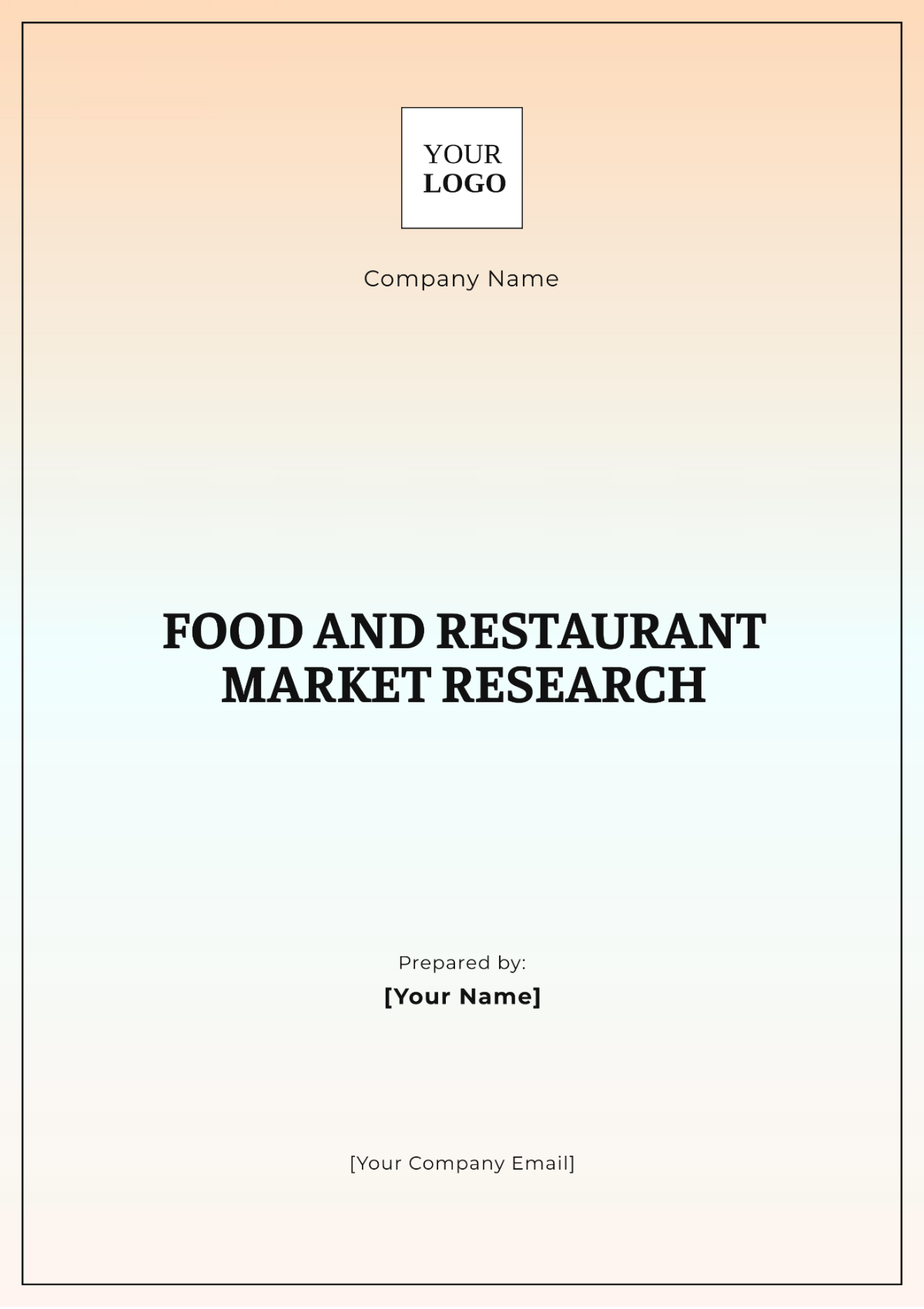Free Food and Restaurant Market Research

I. Executive Summary
As a leading market research firm, our analysis of the food and restaurant industry reveals a dynamic and evolving landscape. The industry is experiencing significant growth driven by consumer demand for diverse cuisines, technological advancements, and increasing emphasis on sustainability. Our findings indicate a strong shift towards health-conscious dining and technology integration. Key recommendations include investing in digital platforms, adopting sustainable practices, and innovating menu offerings to meet emerging consumer preferences.

II. Market Overview
The food and restaurant industry has seen robust growth over the past few years, with an annual market size reaching approximately $900 billion in the U.S. alone. This growth is driven by increasing disposable incomes, changing lifestyles, and the rise of food delivery services. The industry is expected to grow at a CAGR of 6% over the next five years, fueled by trends such as plant-based diets, global cuisine fusion, and convenience-driven consumption patterns.
III. Consumer Insights
Category | Details | |
Demographics | Age:
| Gender:
|
Income Level:
| Occupation:
| |
Preferences | Popular Cuisines:
| Dining Preferences:
|
Demographics | Average Spend per Visit:
| Frequency of Dining Out:
|
Feedback and Reviews | Positive Feedback:
| Common Complaints:
|
IV. Competitive Analysis
Our Competitive Analysis highlights key industry players such as Restaurant Group Inc., Gourmet Dining Ltd., and QuickBite Enterprises.
Restaurant Group Inc.: Dominates with a strong brand presence and innovative menu options. Known for its high-quality ingredients and exceptional service.
Gourmet Dining Ltd.: Focuses on upscale dining experiences and personalized service. Strengths include a sophisticated atmosphere and premium pricing strategy.
QuickBite Enterprises: Leads in the fast-casual segment with a focus on convenience and affordability. Known for its efficient service and wide-ranging menu.
Competitors are investing heavily in technology and sustainability, creating a highly competitive environment.
V. Market Trends
Trend | Description |
|---|---|
Emerging Cuisines |
|
Technology Integration |
|
Sustainability |
|
Health Consciousness |
|
VI. Operational Analysis
Aspect | Details |
|---|---|
Supply Chain |
|
Operational Costs |
|
Staffing | The workforce needs skilled chefs and service staff, emphasizing customer service and food safety training. Average annual turnover is 20%. |
Technology Utilization |
|
VII. Financial Analysis
Metric | Details |
|---|---|
Revenue |
|
Profitability |
|
Cost Structure |
|
Investment |
|
VIII. Recommendations
Based on our detailed analysis, we recommend the following strategies:
Invest in Digital Platforms: Enhance online ordering and delivery for greater convenience.
Adopt Sustainable Practices: Implement eco-friendly packaging and local sourcing to appeal to environmentally conscious consumers.
Innovate Menu Offerings: Regularly update the menu with health-conscious and trending cuisines to meet evolving consumer preferences.
Optimize Operational Efficiency: Leverage technology to streamline operations, reduce waste, and manage costs effectively.
These recommendations aim to help businesses navigate the competitive landscape and achieve sustained growth in the food and restaurant industry.
- 100% Customizable, free editor
- Access 1 Million+ Templates, photo’s & graphics
- Download or share as a template
- Click and replace photos, graphics, text, backgrounds
- Resize, crop, AI write & more
- Access advanced editor
Discover the Food and Restaurant Market Research Template from Template.net! This customizable template is perfect for gathering vital market insights. It's fully editable and tailored to your needs, allowing you to craft detailed reports effortlessly. Plus, it's editable in our Ai Editor Tool, ensuring a seamless and professional finish every time.





























